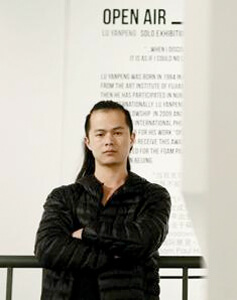Lu Yanpeng was born in 1984 in Fujian Province. He presently lives and works in Beijing. After graduating from the Art Institute of Fujian University in 2005, he has participated in numerous exhibitions both in China and internationally. Lu Yanpeng was nominated for the
FOAM Paul Huf Award in the Netherlands in 2011 and received the top award at the 2011
Pingyao International Photography Festival for the Best Photographer for his work
Open Air. He was the youngest artist to ever receive this award.
Lu Yanpeng is a magician as if he has Midas touch. His darkroom is his magician's cloth, where his photos are but a spectacular performance in the void. He uses his hands, a symbol of the mortal body, paintbrushes, a symbol of tools, and the material world, as represented by light and stones that become a medium for thoughts.
Although we are only able to recall from his work, we can easily imagine the details involved, because everything seems to have been done to perfection, which is in itself incredible. His darkroom skills and creative work have bypassed the barriers of human languages and tools. His strong awareness of his subjects carries him into an autonomous state. The artist in this state is not to be limited by his techniques; he is feeling the subjects spiritually without actually observing them.
Source: www.m97gallery.com
